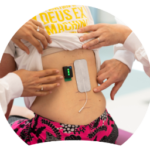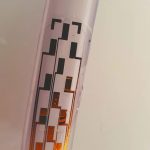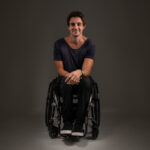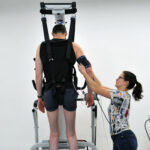SpinalCure speaks to Dr Camila Quel de Oliveira, the lead researcher on a study testing the feasibility of robotics-assisted game-based arm and hand rehabilitation for people with spinal cord injury (SCI). This study is funded by SpinalCure, due to its potential…
Tag: electrical stimulation (page 2)
Lack of bladder control is one of the unseen effects of spinal cord injuries. Can neurostimulation help?
One of the unseen side effects of spinal cord injuries is a loss of bladder control. Many people with spinal cord injuries (SCI) have to take drugs to control their bladders, but unfortunately they come with lots of side effects,…
Study reviews use of neurostimulation in early recovery from an SCI
A recent study has shown for the first time that transcutaneous spinal cord stimulation, also known as neurostimulation, can be used successfully in people while they are still recovering in hospital, writes Tom Elphick, SpinalCure Community Ambassador. Neurostimulation is one of…
Tiny spinal cord stimulator could improve access to treatment
A tiny inflatable spinal cord stimulator has been developed by researchers at the University of Cambridge with the aim of making spinal cord stimulation more practical and accessible. While the device was developed for people with back or leg pain,…
June 2021: Spinal cord injury research update
We are at an exciting point with cure-related spinal cord injury research in Australia, with our landmark gold standard eWalk trial beginning. Great progress is also being made in other areas. Dollars are the major hurdle in expanding trials and access…
Dean’s story
Dean has learned to live without the use of his legs, but he’ll never stop dreaming of returning to his old hobbies. At age 20, he was on the trip of a lifetime living and snowboarding in the French Alps…
Landmark trial aims to help people with spinal cord injury walk again
Wednesday 2 June, Sydney, Australia: Australian researchers are embarking on a landmark international trial which aims to help people with spinal cord injury walk again. Led by researchers at Neuroscience Research Australia (NeuRA) and primarily funded by SpinalCure Australia and…
3D-printed nerve stem cells could help repair damaged spinal cord
Researchers at the University of Minnesota have designed a device that could reconnect the damaged spinal cord. A silicone guide, covered in 3D- printed neuronal stem cells, can be implanted into the injury site, where it grows new connections between…
Human stem cells may provide new scalable source of replacement cells for spinal cord injury
Researchers from the University of California San Diego School of Medicine have successfully created spinal cord neural stems (NSCs) from puripotent stem cells (hPSCs) that differentiate into a diverse population of cells capable of dispering throighout the spinal cord and…
Paralyzed mice with spinal cord injury made to walk again
Most people with spinal cord injury are paralyzed from the injury site down, even when the cord isn’t completely severed. Why don’t the spared portions of the spinal cord keep working? Researchers now provide insight into why these nerve pathways…






